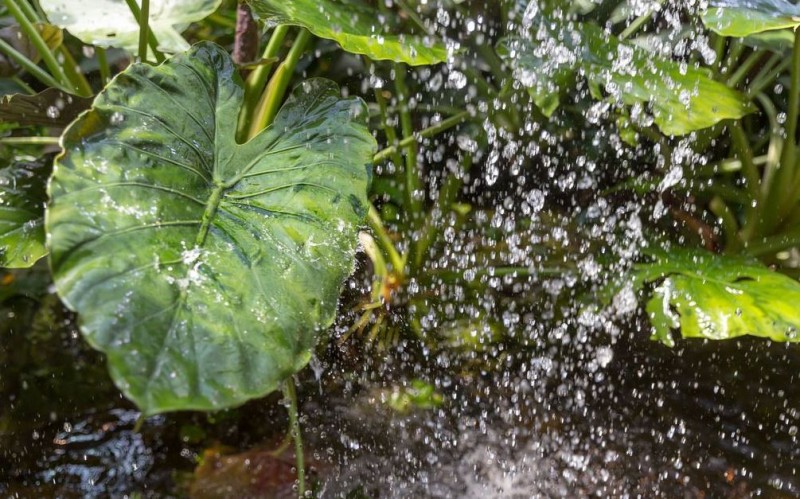
Rainy weather can be a blessing for gardeners, providing an abundant source of water for plants. However, not all plants are well-suited to thrive in wet conditions. In this article, we will explore various plant species that are specifically adapted to rainy weather. Whether you live in a region with frequent rainfall or simply want to make the most of the rainy season, these plants will help you create a lush and vibrant garden. So, let's dive in and discover the perfect plants for rainy weather!
Rainy weather provides a unique opportunity for gardeners to create thriving landscapes. While excessive rainfall can pose challenges, understanding the right plants and techniques can turn a rainy garden into a vibrant oasis. By embracing the natural conditions and choosing suitable plant species, you can harness the power of rain to nurture your garden.
Benefits of Growing Plants in Rainy Weather
Gardening in rainy weather offers several advantages. Firstly, it reduces the need for regular watering, saving both time and resources. Rainwater is also beneficial for plants, as it contains essential nutrients that can enhance their growth. Additionally, the cooler temperatures often associated with rainy weather can create an ideal environment for certain plant species to flourish.
Choosing the Right Plants for Rainy Weather
To ensure a successful garden in rainy weather, it's crucial to select plants that are well-adapted to such conditions. Here are three categories of plants that thrive in wet environments:
Native Plants
Native plants are well-suited to the local climate and have evolved to tolerate the typical weather patterns of a region. By choosing native species, you can be confident that they will withstand the challenges posed by rainy weather.
Water-Loving Plants
Certain plants have a natural affinity for water and can handle excessive moisture. These plants typically have robust root systems that aid in water absorption and efficient drainage, preventing waterlogged soil.
Shade-Tolerant Plants
Rainy weather often brings overcast skies and reduced sunlight. Therefore, selecting shade-tolerant plants is essential. These plants can thrive in low-light conditions and make the most of the limited sunshine available.
Popular Plant Species for Rainy Weather
Now let's explore some plant species that are well-known for their ability to flourish in rainy weather:
Hostas
Hostas are versatile plants that come in a variety of sizes and colors. They are highly adaptable to different soil types and can handle both full sun and shade. With their lush foliage and attractive flowers, hostas add beauty and elegance to any rainy garden.
Ferns
Ferns are renowned for their love of moisture, making them an excellent choice for rainy weather. These ancient plants thrive in shady areas and provide an exquisite touch of greenery to any garden. From delicate maidenhair ferns to majestic tree ferns, there is a wide range of fern species to choose from.
Astilbes
Astilbes are perennial flowers that thrive in moist soil and shade. Their feathery plumes of flowers come in various colors, adding vibrant accents to a rainy garden. Astilbes are low-maintenance plants that can tolerate wet conditions, making them ideal for rain-drenched landscapes.
Canna Lilies
Canna lilies are known for their striking blooms and tropical appeal. These plants thrive in wet conditions and can even be grown in water gardens. With their bold foliage and vibrant flowers, canna lilies bring a touch of exotic beauty to rainy gardens.
Japanese Irises
Japanese irises are renowned for their elegance and grace. These stunning flowers prefer damp soil and can tolerate standing water for short periods. With their captivating blooms and sword-like leaves, Japanese irises create a captivating display in rainy gardens.
Tips for Successful Gardening in Rainy Weather
To ensure your garden thrives in rainy weather, consider the following tips:
Soil Preparation
Before planting, prepare the soil by incorporating organic matter such as compost or well-rotted manure. This improves drainage and promotes healthy root development.
Adequate Drainage
Ensure proper drainage in your garden by creating raised beds or adding drainage channels. This prevents waterlogging and allows excess water to flow away from plant roots.
Mulching
Apply a layer of organic mulch around your plants to regulate soil moisture and prevent weed growth. Mulch also protects the soil from erosion caused by heavy rainfall.
Disease Prevention
Rainy weather can increase the risk of fungal diseases. To prevent these issues, provide adequate airflow around plants, avoid overwatering, and remove any infected plant material promptly.
Rainwater Harvesting: Utilizing Rain for Your Plants
Rainwater harvesting is an eco-friendly practice that allows you to collect and store rainwater for later use in your garden. By installing a rain barrel or a more extensive rainwater harvesting system, you can reduce water waste and ensure a sustainable water source for your plants.
Gardening in rainy weather presents unique opportunities to create a lush and thriving garden. By choosing plants that are well-suited to wet conditions and implementing proper gardening techniques, you can harness the benefits of rain and enjoy a flourishing landscape. Embrace the rain and watch your garden come to life!
Dubai's prominent influencer and content creator, Ahmad Hussain, set for Bollywood debut
The Glass Armonica: Unveiling the Enchanting Sounds of Glass Music
Rupee Charges Ahead: Indian Currency Surges 6 Ps USDollar, Reflecting Investor Confidence